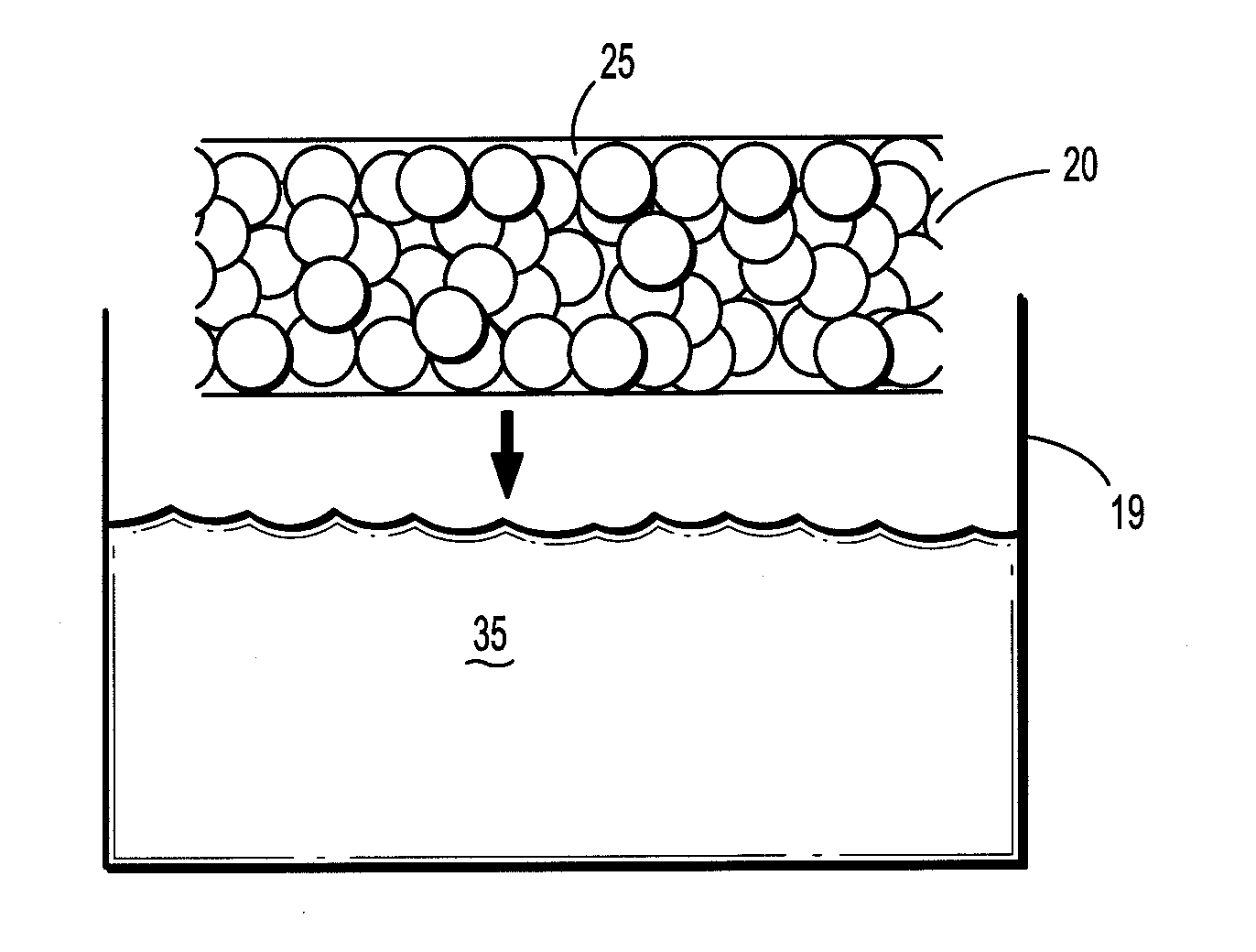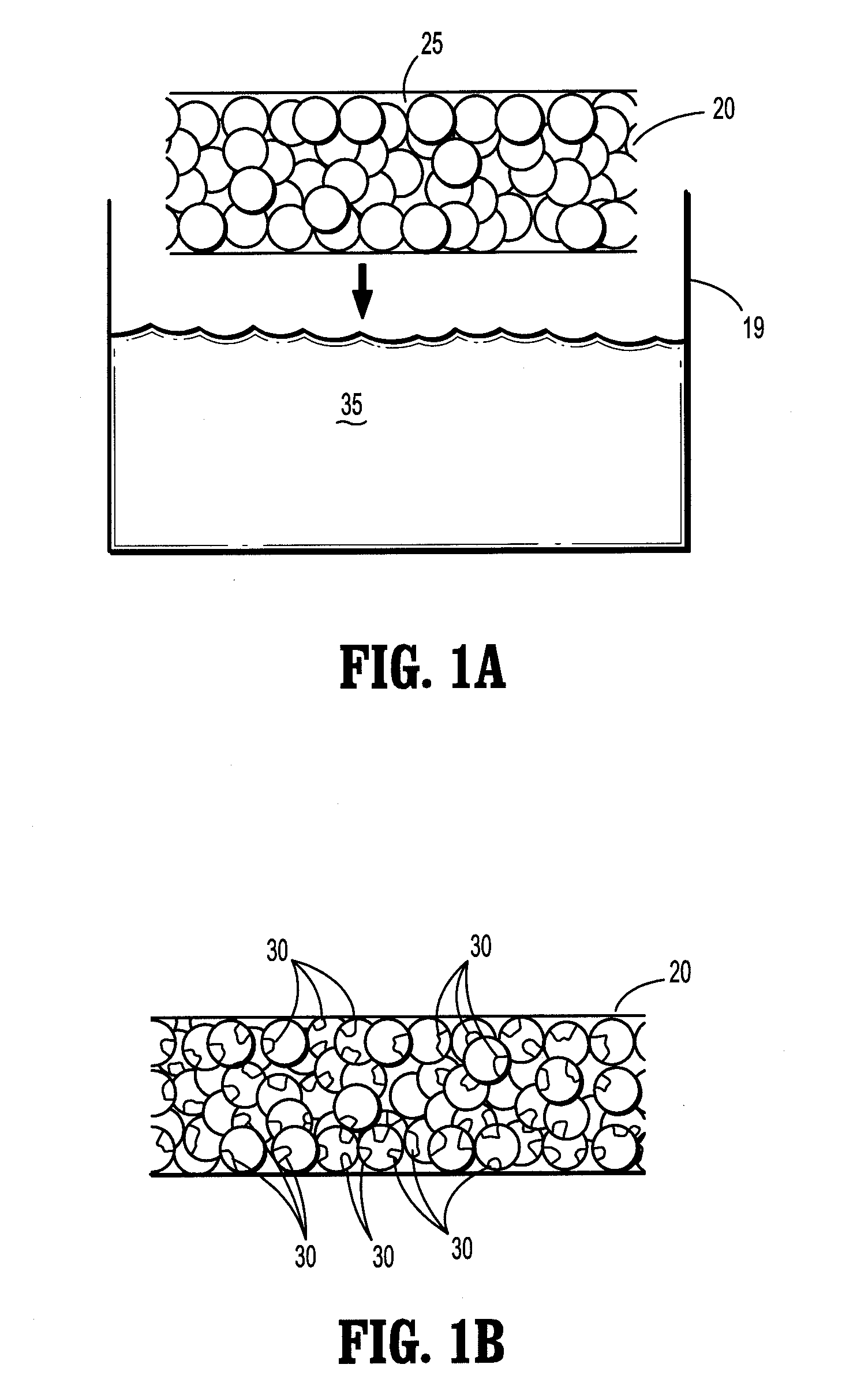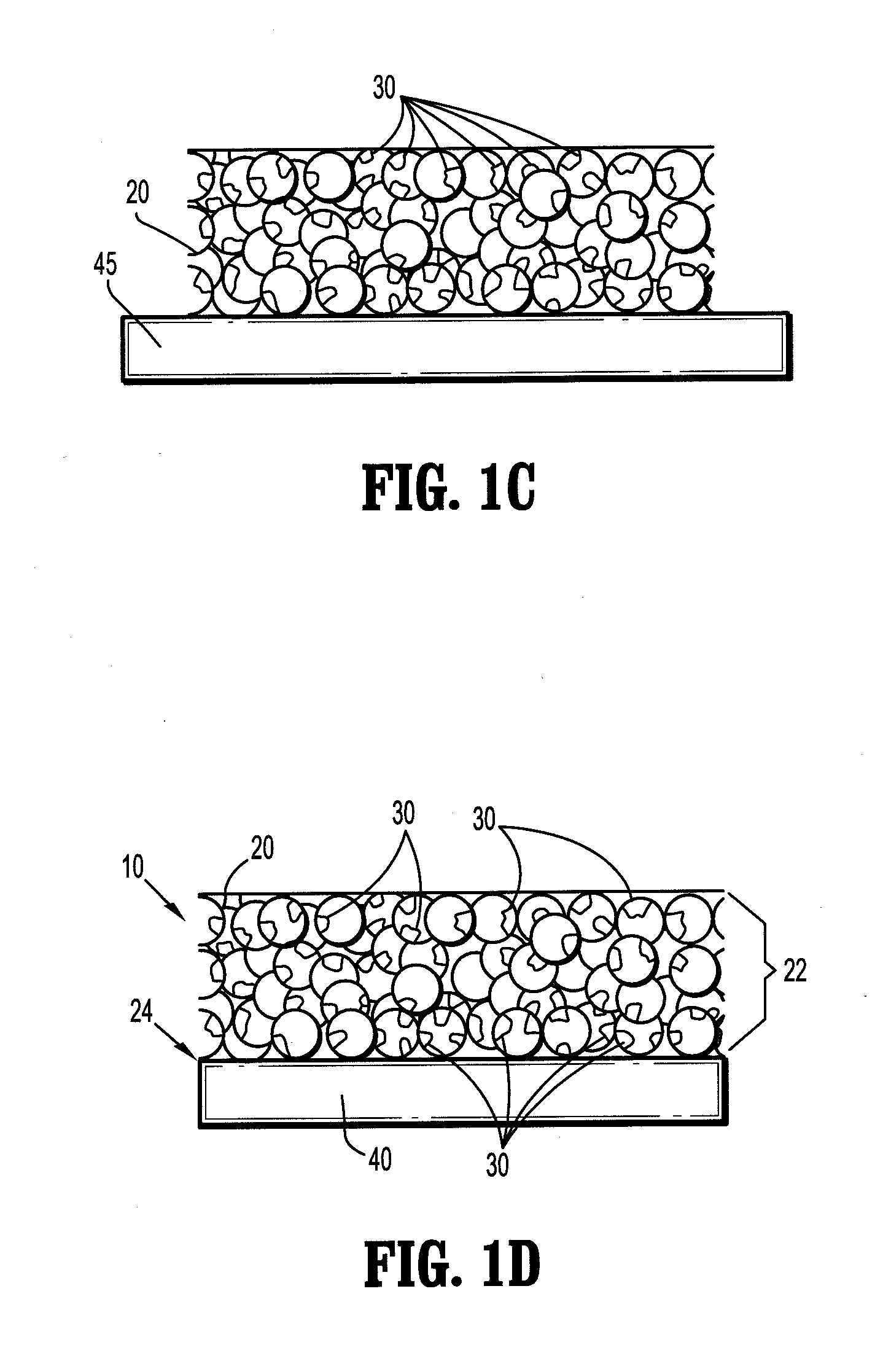Hemostatic implant
a technology of implants and hematopoietic stem cells, applied in the field of implants, can solve the problems of complex formulation of solutions, significant limitations of in situ hemostatic therapy,
- Summary
- Abstract
- Description
- Claims
- Application Information
AI Technical Summary
Benefits of technology
Problems solved by technology
Method used
Image
Examples
example
[0070]A saturated borate buffer solution of trilysine is prepared. The solution contains 20.6 milligrams of trilysine per milliliter of solution. The pH of the solution is about 9.2. A sheet of oxidized cellulose is dipped into the solution and then fixed to a rack for drying. The rack is placed into a vacuum oven. The oven is pumped down to about 50 mTorr and kept at a temperature of about 25° C. for about three days to reduce the moisture level to less than 2% by weight. An eight aim N-hydroxysuccinimidyl-functionalized polyethylene glycol having a molecular weight of about fifteen thousand is melted at about 50° C. on a hot plate. The dried trilysine-containing oxidized cellulose sheet is placed into contact with the melted PEG component. After cooling, the PEG component forms a film on one side of the implant.
[0071]The resulting product is trimmed to a 2 inch by 2 inch square, dried and packaged in a foil container.
[0072]In use, the foil package is opened and the implant is appl...
PUM
| Property | Measurement | Unit |
|---|---|---|
| size | aaaaa | aaaaa |
| size | aaaaa | aaaaa |
| molecular weight | aaaaa | aaaaa |
Abstract
Description
Claims
Application Information
 Login to View More
Login to View More - R&D
- Intellectual Property
- Life Sciences
- Materials
- Tech Scout
- Unparalleled Data Quality
- Higher Quality Content
- 60% Fewer Hallucinations
Browse by: Latest US Patents, China's latest patents, Technical Efficacy Thesaurus, Application Domain, Technology Topic, Popular Technical Reports.
© 2025 PatSnap. All rights reserved.Legal|Privacy policy|Modern Slavery Act Transparency Statement|Sitemap|About US| Contact US: help@patsnap.com



